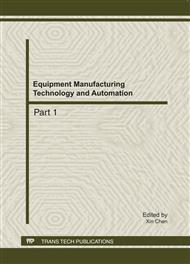[1]
Beech, F.W. (1972). Cider making and cider research: a review. J. Inst. Brew, 78,477-491.
DOI: 10.1002/j.2050-0416.1972.tb03485.x
Google Scholar
[2]
Salih, A.G., Drilleau, J.F., Cavin, F.F., Divies, C., Bourgeois, C.M. (1988). A survey of microbiological aspects of cider making. J. Inst. Brew, 94, 5-8.
DOI: 10.1002/j.2050-0416.1988.tb04545.x
Google Scholar
[3]
Cabrances, C., Moreno, J., Mangas, J.J. (1990). Dynamics of yeast population during cider fermentation in the Asturian Region of spain. Apply. Environment Microbiology, 56,381-384.
DOI: 10.1128/aem.56.12.3881-3884.1990
Google Scholar
[4]
Dueñnas, M., Irastorka, A., Fernández, K., Bilbao, A., Huerta, A. (1994). Microbial population and malolactic fermentation of apple cider using traditional and modified methods. Journal Food Science, 59, 1060-1064.
DOI: 10.1111/j.1365-2621.1994.tb08190.x
Google Scholar
[5]
Kunkee, R. (1984). Selection and modification of yeasts and lactic acid bacteria for wine fermentation. Food Microbiol., 1, 315-332.
DOI: 10.1016/0740-0020(84)90065-0
Google Scholar
[6]
Kunkee, R. (1991). Some roles of malic acid in the malolactic fermentation in wine making. FEMS Microbiol., 88, 55-72.
DOI: 10.1016/0378-1097(91)90696-8
Google Scholar
[7]
Lonvaud-Funel, A. (2002). Lactic acid bacteria-a survey. In: Verlag, T.S. (Ed), Proceedings of the 13th International Oenology Symposium; 9-12 June 2002. International Association of Oenology Management and Wine Marketing. Montpellier, France, pp.59-74.
Google Scholar
[8]
Bartowsky, E., Costello, P., Henschke, P. (2002). Management of malolactic fermentation wine flavor manipulation. New Zealand Grapegrower Winemaker, 461a (7-8), 10-12
Google Scholar
[9]
Carreté, R., Teresa Vidal, M. Bordons, A., Constanti, M., (2002).Inhibitory effect of sulphur dioxide and other stress compounds in wine on the ATPase activity of Oenococcus oeni. FEMS Microbiol. Lett., 211, 155–159.
DOI: 10.1016/s0378-1097(02)00687-0
Google Scholar
[10]
Osborne, J.P., Edwards, C.G. (2006). Inhibition of malolactic fermentation by Saccharomyces cerevisiae during the alcoholic fermentation under lowand high nitrogen conditions: a study in synthetic media. Aust. J. Grape Wine. Res., 12, 69–78.
DOI: 10.1111/j.1755-0238.2006.tb00045.x
Google Scholar
[11]
Comitini, F., Ferretti, R., Clementi, R., Mannazzu, I., Ciani, M. (2005), Interactions between Saccharomyces cerevisiae and malolactic bacteria: preliminary characterization of a yeast proteinaceous compound(s) active against Oenococcus oeni. J. Appl. Microbiol. 99, 105–111.
DOI: 10.1111/j.1365-2672.2005.02579.x
Google Scholar
[12]
Osborne, J.P., Edwards, C.G. (2007), Inhibition of malolactic fermentation by a peptide produced by Saccharomyces cerevisiae during alcoholic fermentation. Int. J. Food Microbiol. 118, 27–34.
DOI: 10.1016/j.ijfoodmicro.2007.05.007
Google Scholar
[13]
Salih, A.G., Drilleau, J.F., Cavin, F.F., Divies, C., Bourgeois, C.M. (1988). A survey of microbiological aspects of cider making. J. Inst. Brew, 94, 5-8.
DOI: 10.1002/j.2050-0416.1988.tb04545.x
Google Scholar
[14]
Thilo C. Fischer, Christian Gosch, Judith Pfeiffer, Heidrun Halbwirth, Christian Halle, Karl Stich, Gert Forkmann (2007). Flavonoid genes of pear (Pyrus communis). Trees, 21, 521-529.
DOI: 10.1007/s00468-007-0145-z
Google Scholar
[15]
Rajko Vidrih, Janez Hribar (1999). Synthesis of higher alcohols during cider processing. Food Chemistry, 67, 287-294.
DOI: 10.1016/s0308-8146(99)00136-3
Google Scholar
[16]
Belén Suárez Valles, Rosa Pando Bedriñana, Norman Fernández Tascón, Amparo Querol Simón, Roberto Rodríguez Madrera (2007). Yeast species associated with the spontaneous fermentation of cider. Foof Microbiology, 24, 25-31.
DOI: 10.1016/j.fm.2006.04.001
Google Scholar


